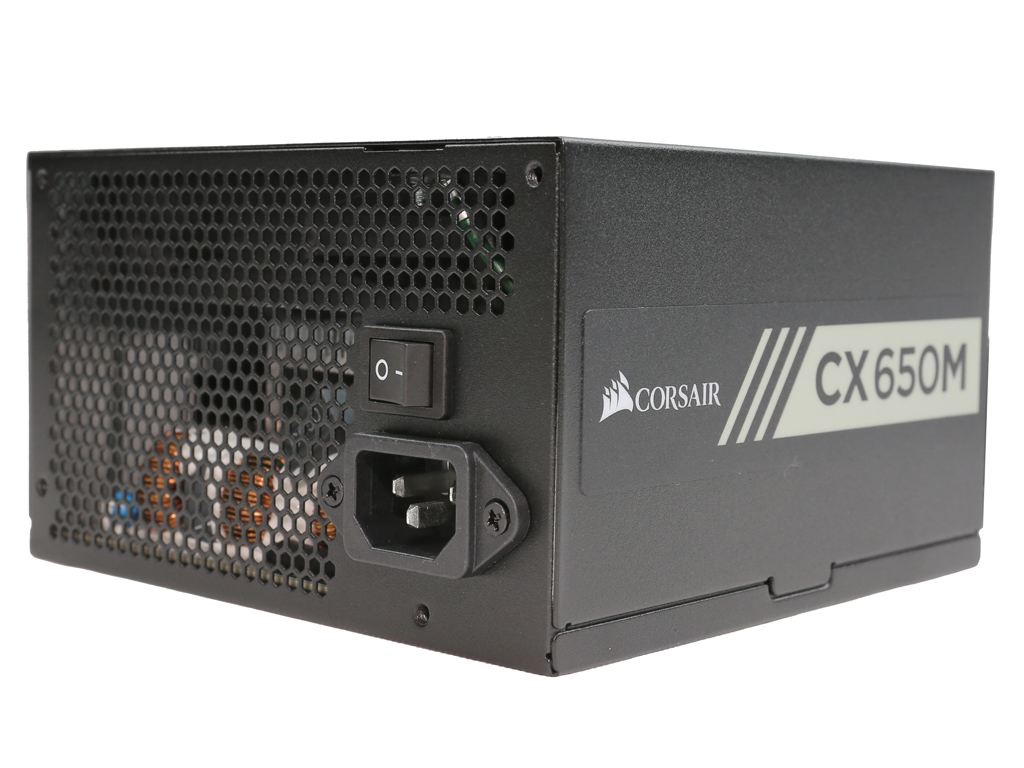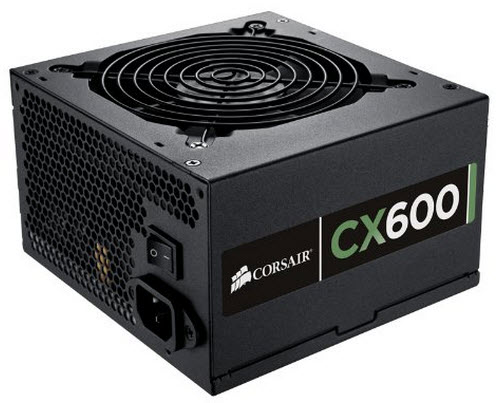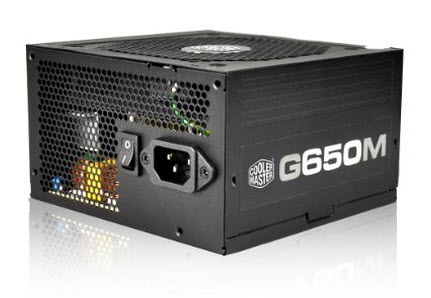Corsair CX650M PSU Review
Corsair's CX series consists of both non-modular and semi-modular units. It was recently upgraded with new members and improved versions of older ones. The CX650M is the third strongest member of the line, featuring 650W capacity and a 40°C rating.
Why you can trust Tom's Hardware
Load Regulation, Hold-Up Time, And Inrush Current
To learn more about our PSU tests and methodology, please check out How We Test Power Supply Units.
Primary Rails And 5VSB Load Regulation
Load Regulation testing is detailed here.
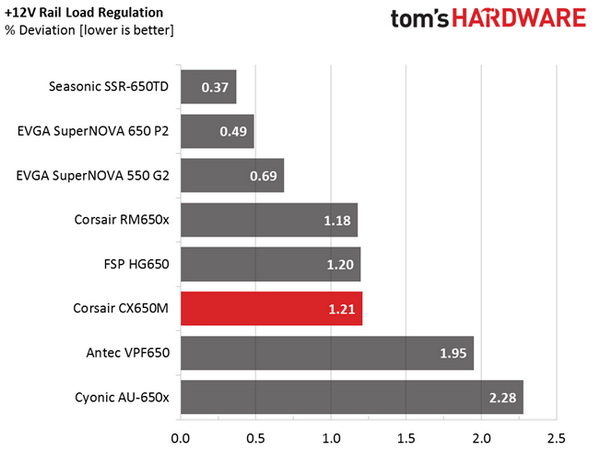
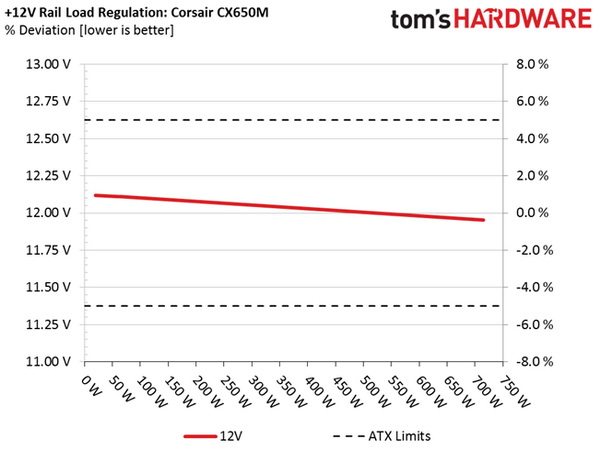
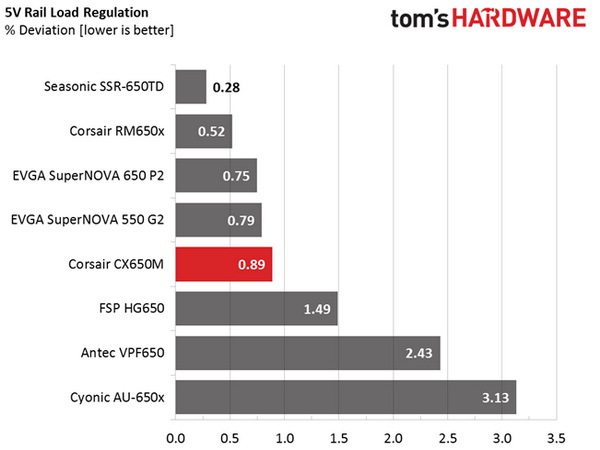
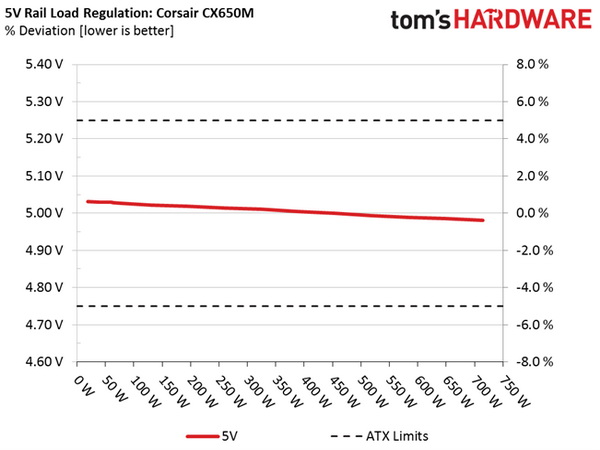
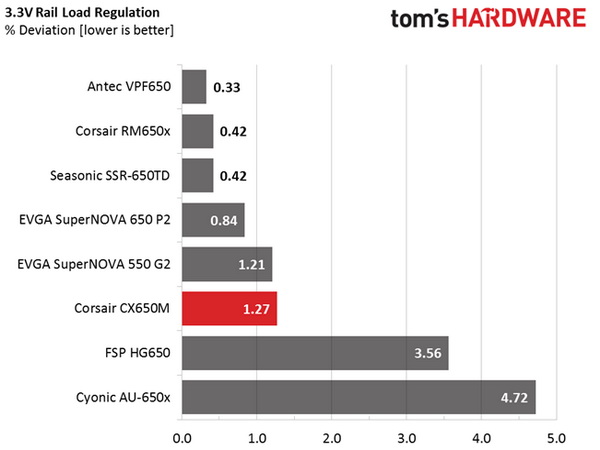
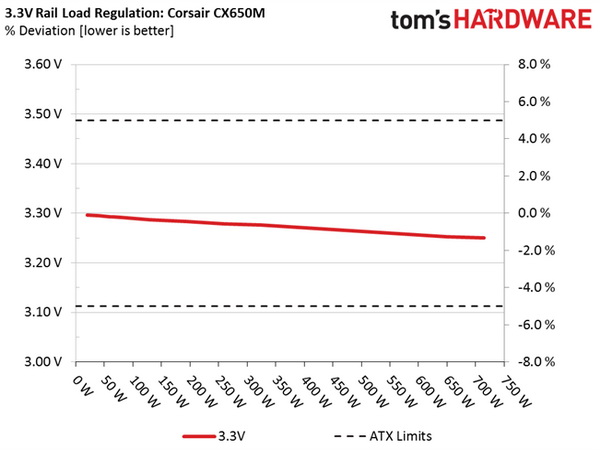
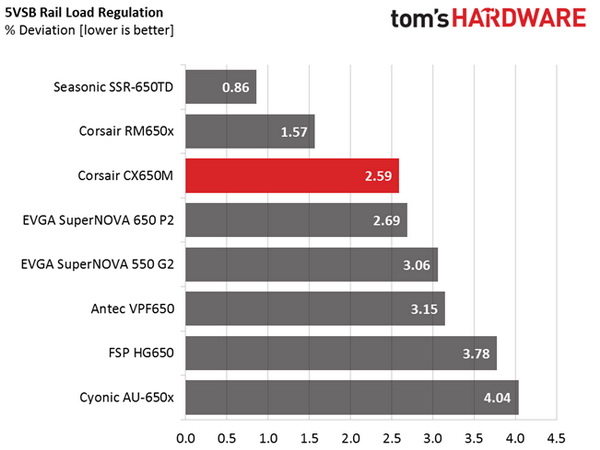
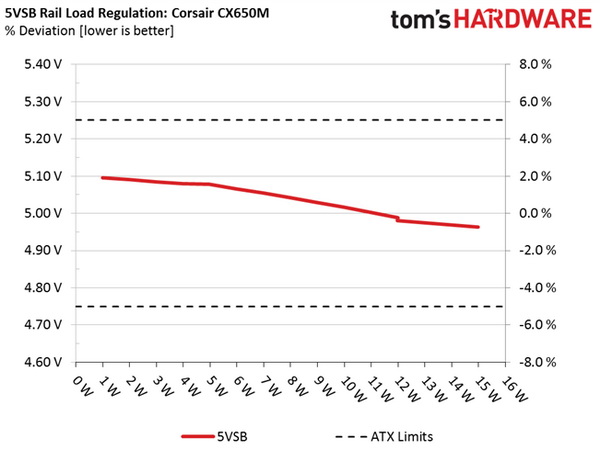
Hold-Up Time
Our hold-up time tests are described in detail here.
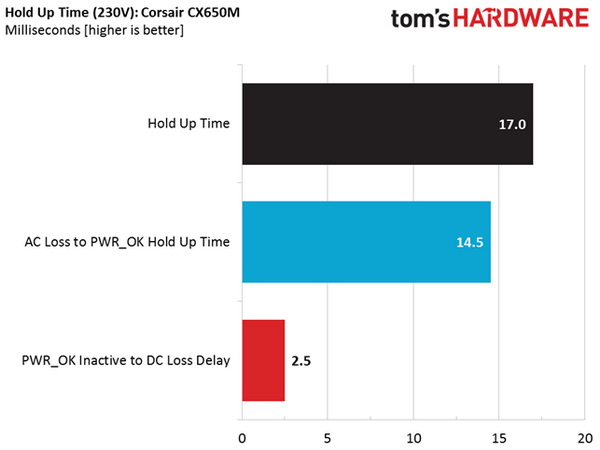
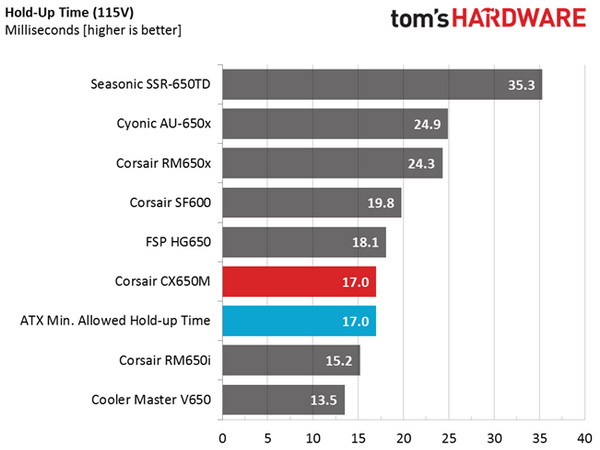
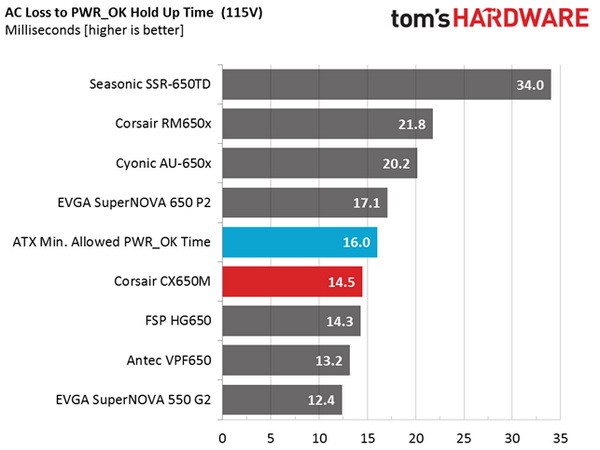
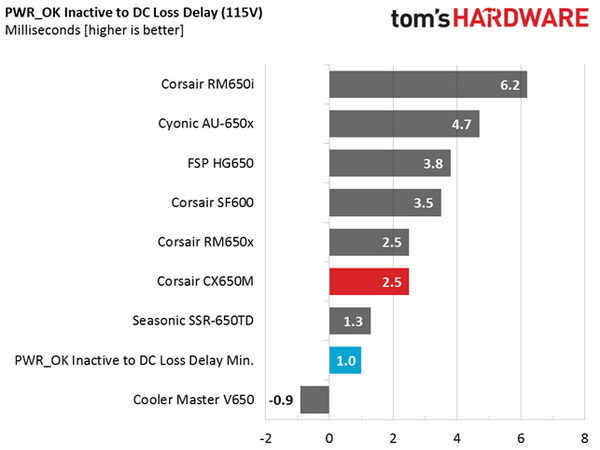
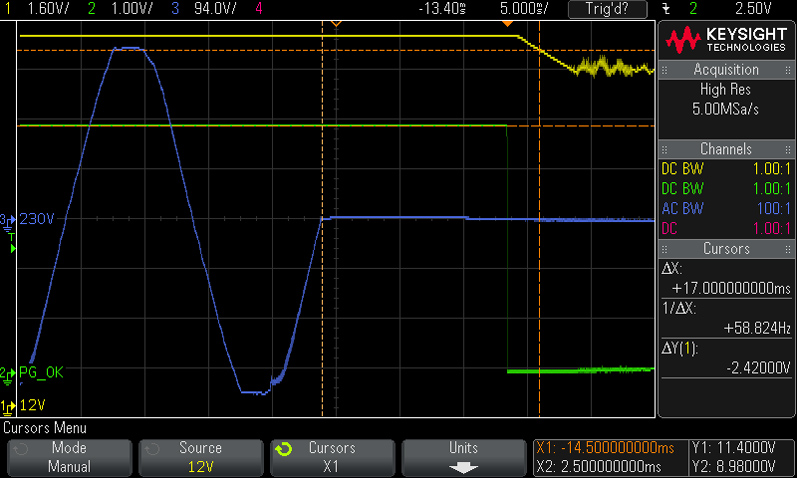
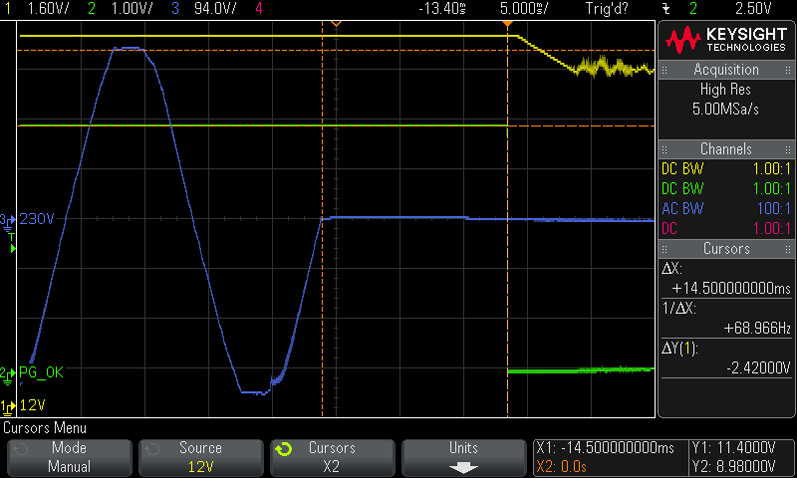
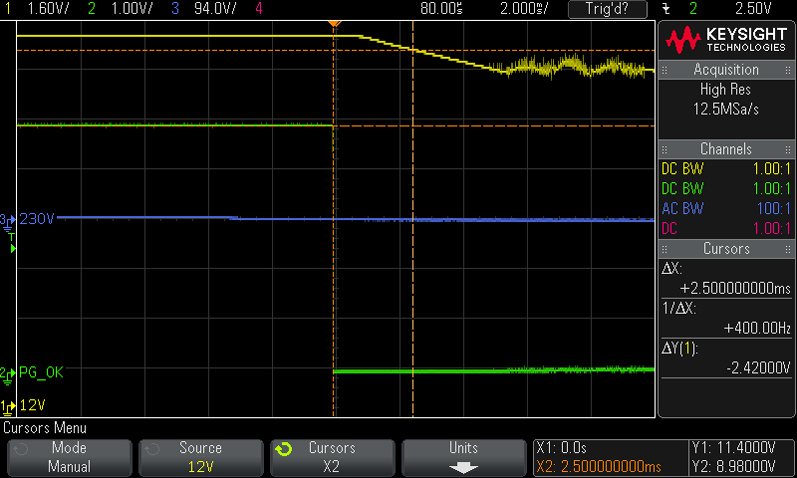
The hold-up time we measured hits the spot, while the power-good signal lasts for shorter than required. At least it drops before the rails go out of spec, providing accurate information to the motherboard. This is a huge deal since we've seen a number of PSUs (including some high-end ones) have problems providing accurate power-good information.
Inrush Current
For details on our inrush current testing, please click here.
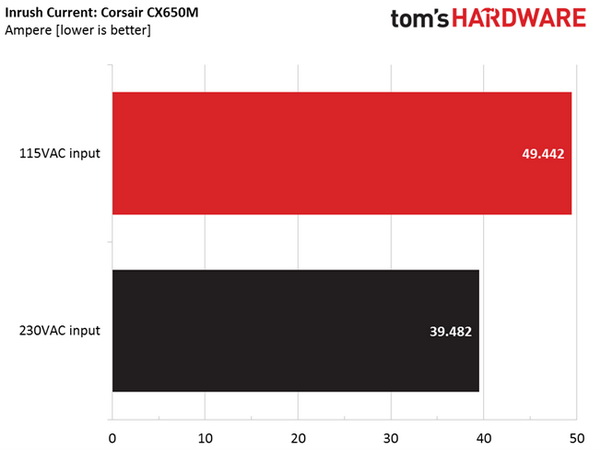
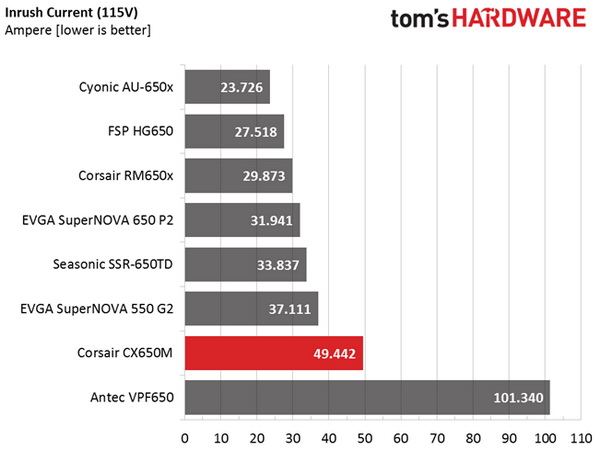
The inrush current with 115V is quite high, while with 230V it's normal for 650W unit.
Load Regulation And Efficiency Measurements
The first set of tests reveals the stability of the voltage rails and the PSU's efficiency. The applied load equals (approximately) 10 to 110 percent of the maximum load the supply can handle, in increments of 10 percentage points.
Get Tom's Hardware's best news and in-depth reviews, straight to your inbox.
We conducted two additional tests. During the first, we stressed the two minor rails (5V and 3.3V) with a high load, while the load at +12V was only 0.1 A. This test reveals whether a PSU is Haswell-ready or not. In the second test, we determined the maximum load the +12V rail could handle with minimal load on the minor rails.
| Test # | 12V | 5V | 3.3V | 5VSB | DC/AC (Watts) | Efficiency | Fan Speed | Fan Noise | Temps (In/Out) | PF/AC Volts |
|---|---|---|---|---|---|---|---|---|---|---|
| 1 | 3.566A | 1.984A | 2.003A | 0.980A | 64.73 | 81.46% | 840 RPM | 27.7 dB(A) | 36.49°C | 0.972 |
| 12.109V | 5.028V | 3.293V | 5.078V | 79.46 | 40.16°C | 115.1V | ||||
| 2 | 8.174A | 2.981A | 3.009A | 1.180A | 129.69 | 87.07% | 840 RPM | 27.7 dB(A) | 37.38°C | 0.988 |
| 12.094V | 5.021V | 3.287V | 5.066V | 148.95 | 41.38°C | 115.1V | ||||
| 3 | 13.145A | 3.488A | 3.530A | 1.383A | 194.85 | 88.22% | 840 RPM | 27.7 dB(A) | 38.54°C | 0.994 |
| 12.078V | 5.018V | 3.283V | 5.055V | 220.87 | 42.97°C | 115.2V | ||||
| 4 | 18.118A | 3.988A | 4.021A | 1.585A | 259.73 | 88.43% | 840 RPM | 27.7 dB(A) | 39.47°C | 0.996 |
| 12.063V | 5.014V | 3.279V | 5.042V | 293.70 | 45.20°C | 115.1V | ||||
| 5 | 22.765A | 4.986A | 5.034A | 1.785A | 324.70 | 88.16% | 840 RPM | 27.7 dB(A) | 41.90°C | 0.997 |
| 12.047V | 5.010V | 3.276V | 5.029V | 368.33 | 49.23°C | 115.1V | ||||
| 6 | 27.419A | 5.994A | 6.050A | 1.990A | 389.70 | 87.26% | 1200 RPM | 36.1 dB(A) | 42.17°C | 0.996 |
| 12.033V | 5.005V | 3.271V | 5.016V | 446.62 | 50.26°C | 115.1V | ||||
| 7 | 32.083A | 7.007A | 7.069A | 2.195A | 454.65 | 86.41% | 1430 RPM | 37.0 dB(A) | 43.12°C | 0.997 |
| 12.017V | 5.000V | 3.267V | 5.002V | 526.15 | 51.50°C | 115.1V | ||||
| 8 | 36.768A | 8.010A | 8.091A | 2.404A | 519.64 | 85.43% | 1685 RPM | 39.5 dB(A) | 43.70°C | 0.997 |
| 12.001V | 4.994V | 3.262V | 4.988V | 608.26 | 52.42°C | 115.1V | ||||
| 9 | 41.889A | 8.516A | 8.624A | 2.405A | 584.59 | 84.47% | 1950 RPM | 42.2 dB(A) | 44.31°C | 0.997 |
| 11.985V | 4.989V | 3.257V | 4.980V | 692.10 | 53.27°C | 115.1V | ||||
| 10 | 46.773A | 9.033A | 9.127A | 3.020A | 649.53 | 83.30% | 2240 RPM | 45.5 dB(A) | 45.03°C | 0.998 |
| 11.969V | 4.985V | 3.253V | 4.963V | 779.71 | 54.31°C | 115.1V | ||||
| 11 | 52.278A | 9.040A | 9.134A | 3.025A | 714.58 | 82.50% | 2240 RPM | 45.5 dB(A) | 45.22°C | 0.998 |
| 11.953V | 4.981V | 3.250V | 4.954V | 866.19 | 54.88°C | 115.1V | ||||
| CL1 | 0.100A | 16.024A | 16.004A | 0.003A | 133.50 | 81.94% | 840 RPM | 27.7 dB(A) | 41.64°C | 0.990 |
| 12.092V | 4.997V | 3.262V | 5.056V | 162.92 | 48.92°C | 115.1V | ||||
| CL2 | 53.963A | 1.002A | 1.003A | 1.001A | 659.24 | 83.98% | 2240 RPM | 45.5 dB(A) | 44.28°C | 0.998 |
| 11.970V | 5.003V | 3.273V | 5.006V | 785.00 | 53.21°C | 115.1V |
For such an affordable PSU, load regulation is pretty tight! All major rails are within 1.5%, with only 5VSB exceeding 2%. The CX650M surprises us in a good way by performing much better than we were expecting. When it comes to efficiency, the CX650M easily meets the fairly loose 80 PLUS Bronze requirements, although under higher loads efficiency takes a large hit. The synchronous design on the secondary side and the DC-DC converters that generate the minor rails surely play a large role in this.
Besides good performance, the CX650M also manages to offer quiet operation (even under high operating temperatures), so long as the applied load doesn't exceed 50% of its max-rated capacity. The only downside is that Corsair's minimum fan speed is quite high at 840 RPM. It could easily be lower than 600 RPM. In any case, output noise only exceeds 40 dB(A) with 90% and higher loads.
Current page: Load Regulation, Hold-Up Time, And Inrush Current
Prev Page A Look Inside And Component Analysis Next Page Efficiency, Temperature, And Noise
Aris Mpitziopoulos is a contributing editor at Tom's Hardware, covering PSUs.
-
turkey3_scratch Onus why would Corsair produce me?Reply
Anyway I think the price/performance page shows all. This thing rocks!
Also Jonnyguru claims it is a rifle bearing fan that has the same model # as the sleeve variant. -
benedict78 Does the CX650 perform the same as the CX650M? I'm not interested in modularity anyway.Reply -
Aris_Mp I have several CM and CX-M units, which I plan to fully evaluate. So far I figured that there are differences (something natural of course) in their performance.Reply -
Dark Lord of Tech Could you put the newer CXM 750W OR 850W on deck soon , as they are widely use for DUAL CARD configurations.Reply -
turkey3_scratch The 750W and 850W CXM units are basically unchanged except for a bridge rectifier upgrade. Everything else is the same. Only the CX450-650M got the major revisions.Reply -
Dark Lord of Tech Yeah I know that , but want to see one reviewed , to compare top older generations.Reply
